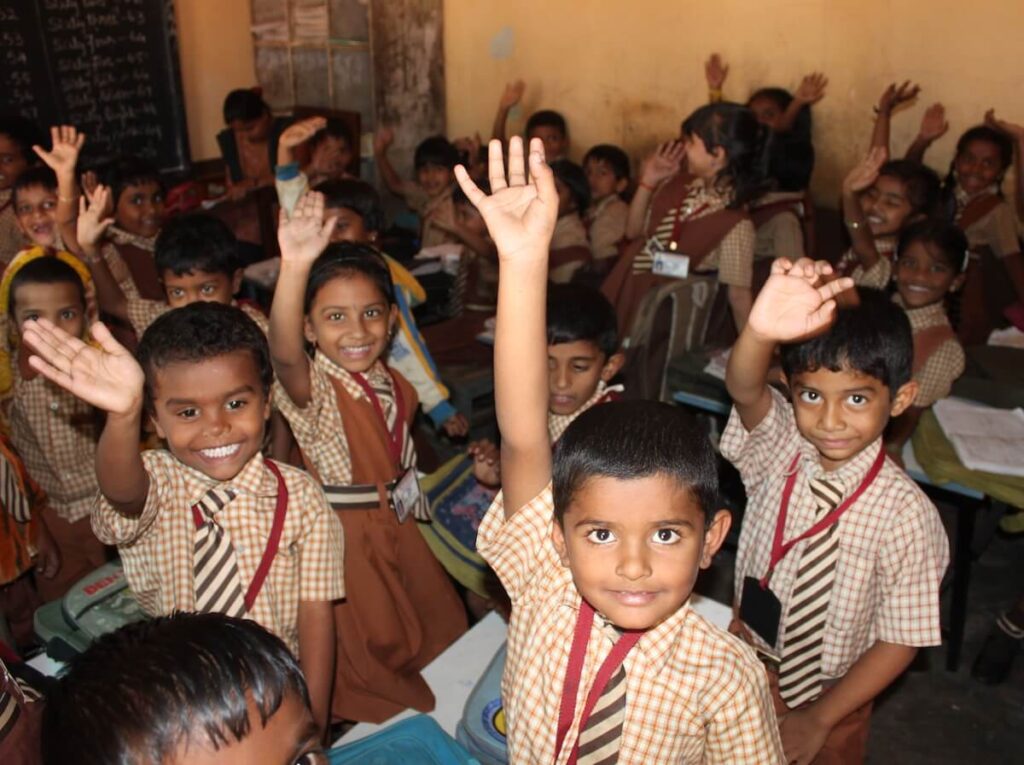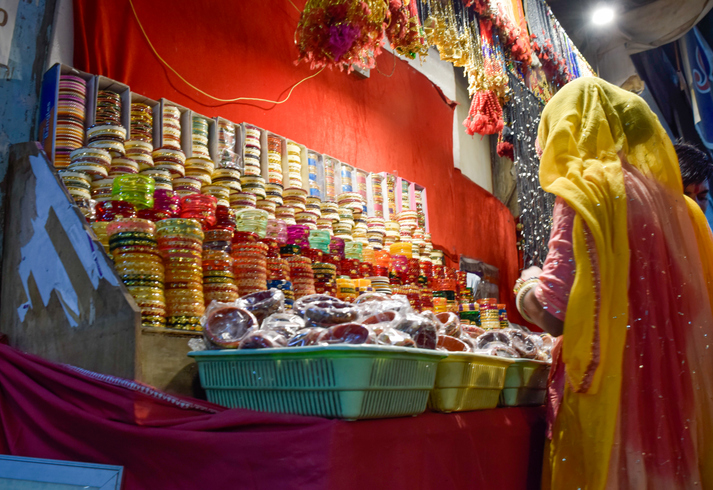
Richard Greenberg is a Managing Director of the Social Enterprise Finance group at U.S. International Development Finance Corporation (DFC, formerly OPIC). The group leads DFC efforts to place capital in highly impactful and innovative enterprises and funds.
Like other development finance institutions, DFC – which has prioritized inclusive finance for decades to address critical challenges facing the developing world – has been hard at work supporting immediate and longer-term needs of MFIs and other actors so they can continue supporting base-of-pyramid clients during the COVID-19 crisis. In this interview with CFI, Greenberg discusses collaboration with other DFIs, DFC’s social impact initiatives that support its development goals, digitization during the pandemic, and more.
In April’s COVID-related joint statement, the DFI Alliance highlighted that its DFI members would work to address not only current liquidity issues in the financial sector, but also other measures related to essential business activities. How have you collaborated on your inclusive finance objectives since that announcement? Has there been any other inter-DFI coordination? What more could be done in this regard?
There have been extensive conversations to collaborate and coordinate with other DFIs to ensure we’re deploying our capital as efficiently as possible given the significant impacts of the crisis. The crisis has generated tremendous demand for capital from DFC and other DFIs. Since we are long-term lenders focused on our missions, in times like these, DFIs become even more important in addressing market gaps.
In times like these, DFIs become even more important in addressing market gaps.
Many of the projects that we’re looking at involve multiple DFIs. Sometimes that’s a challenge because our level of participation, our products, our policies and our risk-return requirements may all be slightly different, but these diverse strengths and capabilities are also what make our collaboration so powerful. Our goal is to make sure we can accommodate—and leverage—the differences there may be to arrive at the financing package that best supports the developmental impact we’re seeking.
We have also recently announced that DFIs have collectively catalyzed $4.5 billion in investment financing to support women through the 2X Challenge, surpassing the initial goal of $3 billion. Building on DFC’s 2X Women’s Initiative, launched in 2018, we encouraged our counterparts from G7 countries to accept the 2X Challenge by prioritizing investments in women. And it’s not just G7 countries: 15 total countries have joined to date.
Another aspect of our collaboration is discussions with DFIs and other investment partners to share market and institutional response information. One of those groups that we have joined is being led by CGAP.
In addition to the recently announced $50 million of debt financing for Northern Arc, has DFC provided direct assistance to institutions support base-of-pyramid clients during these difficult times? Could you tell us a bit more about how the Northern Arc support came to pass?
We’ve had a long-standing relationship with the senior management of Northern Arc (formerly IFMR Trust). They are a pioneer and a leader in wholesale finance in India. They have tremendous expertise and knowledge of the market. The proceeds of our loan to Northern Arc will be used to expand its loan portfolio in areas of importance to DFC, such as women’s economic empowerment, food security, and the WASH sector.
Our goal is be as responsive as we can to what the market needs at this unique time.
Our goal is be as responsive as we can to what the market needs at this unique time, working with established and new clients. For clients that we have previously worked with, we’ve been able to move projects forward especially quickly throughout the crisis. For example, in India, we have closed and disbursed funds to two clients, including Varthana, an education finance company that serves low-income families, and Caspian, an income fund manager that lends to SMEs. The debt moratorium in India certainly created additional risk and complexity, but the quality of these entities and the strong relationships we had with them enabled us to keep moving forward.
These are just two examples among many others we are supporting in developing countries reeling from COVID-19, such as Banco Industrial in Guatemala, whose portfolio includes 30 percent women-owned or women-led businesses, Root Capital for farmers in Latin America and Africa, One Acre Fund supporting farmers in Kenya, and a fund managed by WaterEquity, which lends to MFIs to improve access to reliable and clean sources of water.
What about coordinating with fund managers? What role have they played?
We have relationships with many of the leading global microfinance fund managers. Some of them have expanded their investment strategy to include SMEs and other financial intermediaries. Shortly after the crisis began, we were contacted by many fund managers with ideas about how to address needs by expanding existing funds, creating new funds, or reorienting funds that were already raising capital but not yet launched.
There are a lot of questions related to the type of capital to be deployed, the timing, and demand versus supply in various markets.
We are working with several of them right now, making good progress on underwriting and collaboration with other DFIs and fund managers to put together the right kind of capital for these funds so they can quickly start to deploy it. Of course, in the context of the crisis, there are a lot of questions related to the type of capital to be deployed, the timing, and demand versus supply in various markets. The base case assumption for most is that there’s going to be significant liquidity needs in the near term, though that will likely vary significantly across markets.
Geographically, DFC’s microfinance/inclusive finance activities have reached a diverse range of countries and regions. Are there any countries or regions DFC has prioritized with regards to its support of inclusive finance during COVID? Are there issues unique to specific places, or are challenges mostly universal?
In terms of regions, DFC is open for business across emerging markets. We focus on low-income and lower middle-income countries. Priority regions include Africa, Latin America and the Caribbean, and the Indo-Pacific.
There are different needs and challenges around the world. The strength and resilience of financial sector institutions and regulation varies considerably, as does extent of digitization which is so important at this time. Countries are getting hit very differently and we need to account for that.
Has the crisis altered DFC’s approach to funding social impact enterprises beyond microfinance?
DFC’s Portfolio for Impact and Innovation (PI2) has launched, which builds on the success of OPIC’s Portfolio for Impact (PI) initiative, introduced in 2014. PI2 is how we serve smaller, early-stage social enterprises that have a highly developmental impact but that lack scale-up capital due to their relative size, novel approach, or limited track record. Initially, financing for each project under PI2 was $1 to $5 million; now, we’re able to go up to $10 million per deal.
In the wake of COVID-19, PI2 takes on even greater importance: we know that it is often small, early-stage ventures that introduce the most innovative solutions to daunting challenges. These creative business models will be exactly what we need to navigate the many new challenges that COVID-19 has brought to emerging markets.
Has the crisis shifted the perceptions of inclusive finance within DFC?
Inclusive finance has been a focus of DFC for a long time. We have become one of the most significant capital providers among DFIs to microfinance over the last 10 years. This crisis is demonstrating how inclusive finance is even more essential.
Though our underwriting process is rigorous, we have leveraged information sharing with co-investors to further accelerate the deployment of capital. Additionally, in the management of our existing portfolio, we have been proactive and expeditious in trying to respond to clients who may be struggling as a result of this crisis and may need some relief.
Has DFC engaged with fintechs and non-microfinance FSPs during this crisis? Are you seeing a rush to digitization among your partners? How, if at all, are your investees working to accelerate digitization for consumer segments who were conducting business primarily offline – and how might this be done safely?
There’s no question that, with the lockdowns, having a digital platform is critical. Some MFIs have already digitized, others less so, and the latter are of course a lot more vulnerable in these conditions.
It’s really important that those MFIs and intermediaries that need to further digitize have the opportunity and support to do that. For example, a fund manager launching a fund for which we expect to provide financing has a specific technical assistance facility that focuses on digitization. They assess an MFI’s digitization needs and can provide finance to facilitate action items. It’s important that we not only provide financing, but provide this kind of targeted support to strengthen financial institutions to which we are lending.
What about time frames? CFI, the Microfinance Coalition, and others have identified investor medium-term needs as well as short term ones. What do you see as the medium-term needs beyond liquidity? When does the medium term “start”?
My personal interpretation is the “short term” is the next quarter or two. We’re trying to move very quickly. We don’t want to miss the opportunity to support pressing needs.
We are thinking about liquidity now and solvency issues that might arise down the road. At this time it is difficult to forecast market conditions in the coming quarters. One of our existing partners that lends to MFIs has a view that demand for their funds will slow down temporarily while others are expecting increased demand. Projecting the demand for capital in this kind of volatile market is less certain than it typically would be, so that’s creating some challenges in thinking about the risks versus returns.
We are thinking about liquidity now and solvency issues that might arise down the road.
Unfortunately, it seems likely that some people in the markets we serve who are currently middle income may lose jobs and income that will push them into a lower income level or even poverty – at least temporarily – so that could create more demand for the services from some of the institutions that we fund.
We want to support funds and intermediaries that will manage their capital prudently and avoid taking unnecessary risks. In some cases, this may mean focusing their lending initially to MFIs that are the strongest right now, and then adding institutions to their portfolios that are smaller and more vulnerable – but serve important underserved groups – over time.









